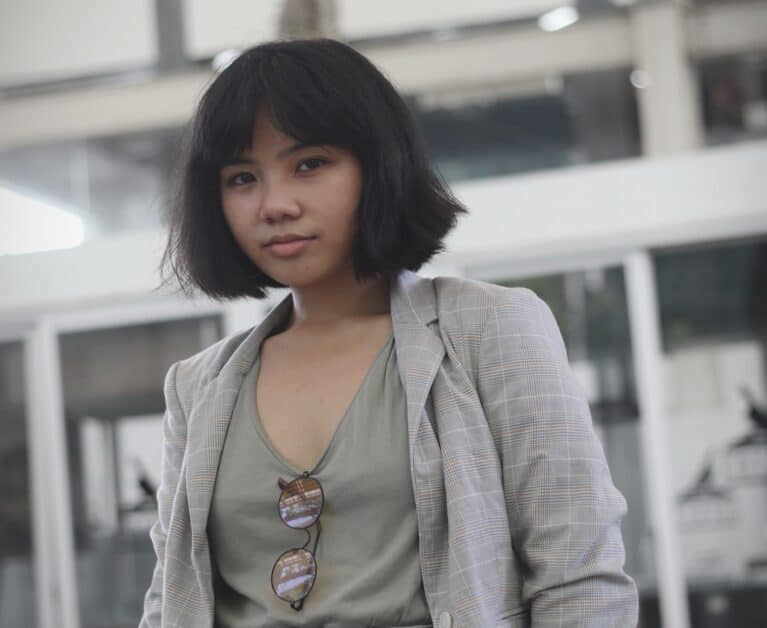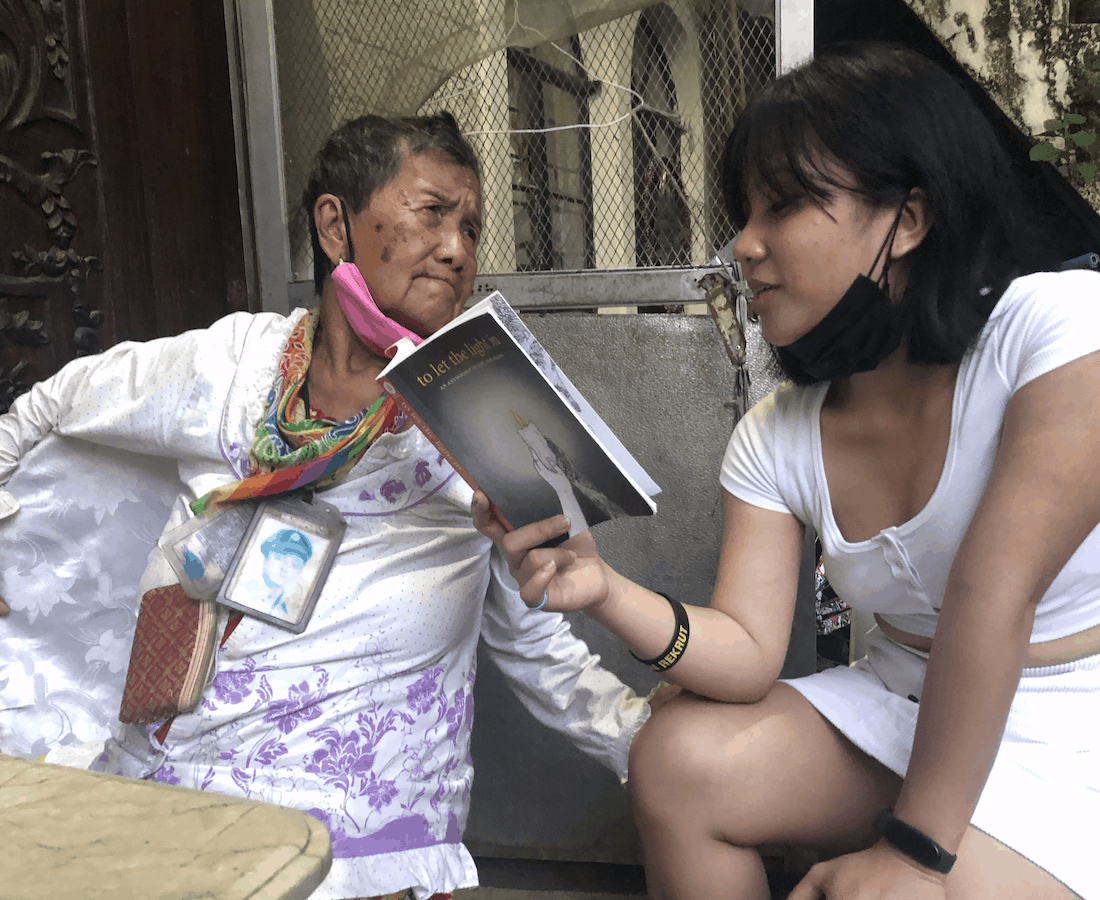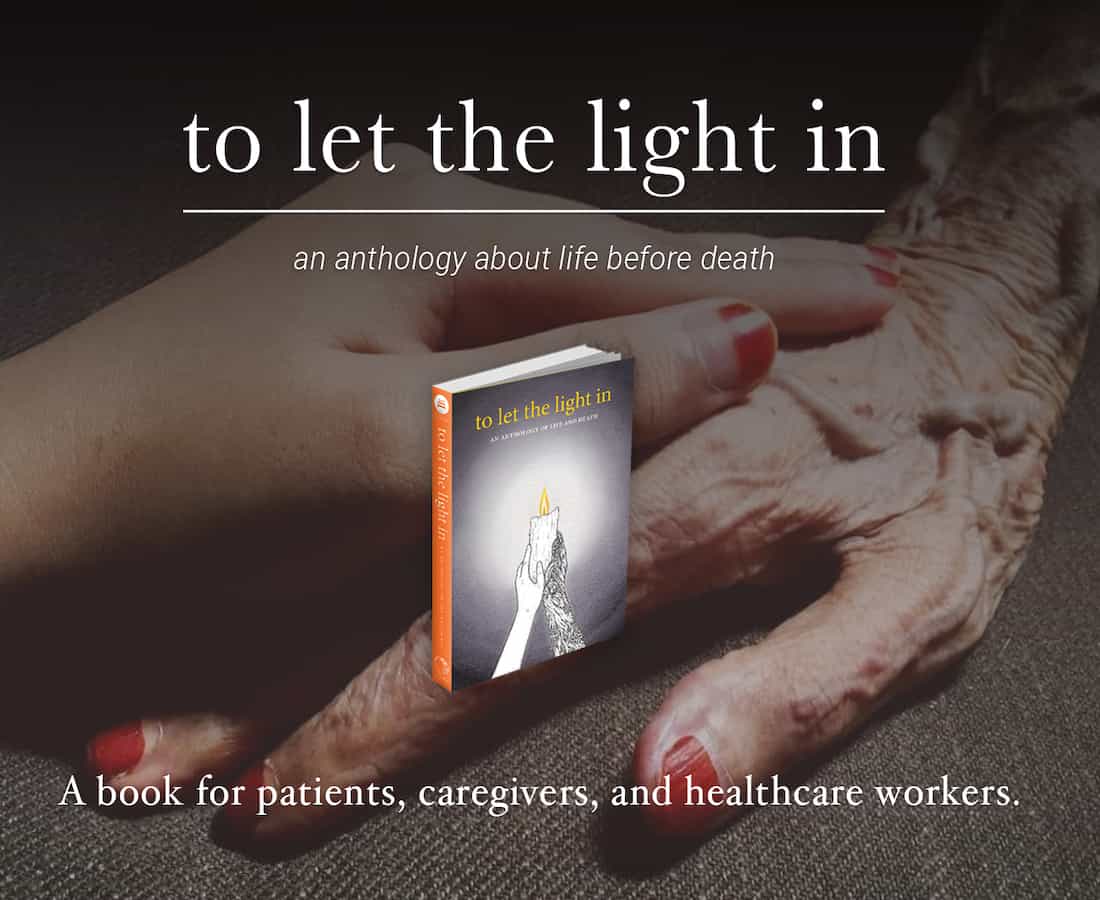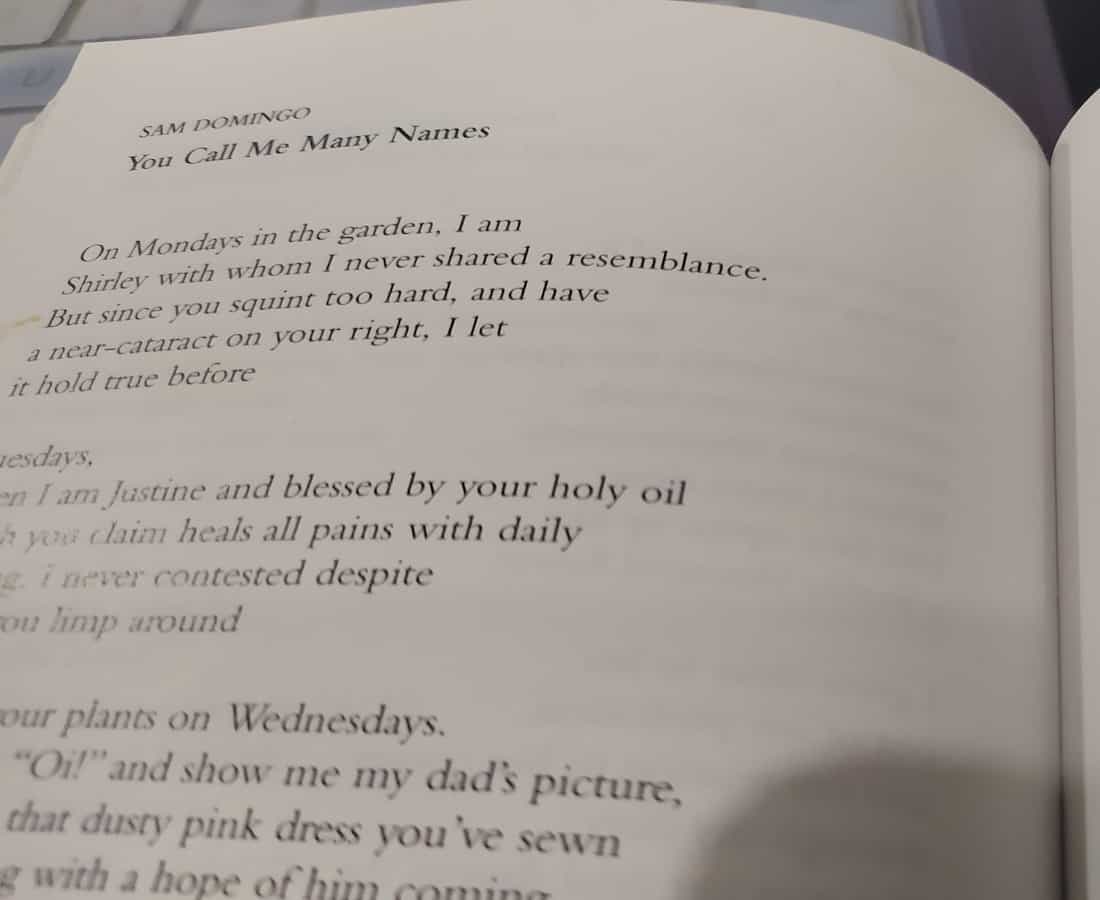Eye Candy: We Have a Difficult Conversation About Ageing, Sickness, Death, and Care with Writer-Artist Sam Domingo

PUBLISHED August 27th, 2021 06:00 am | UPDATED September 7th, 2021 09:46 am
Leon Trotsky once said that “art is not a mirror to hold up to society, but a hammer with which you shape it”. After reading Sam Domingo’s poem submitted to ‘To Let The Light In’ – a multinational and multilingual poetry anthology on palliative care – we confidently attest that Domingo is an artist, in every sense of Trotsky’s definition.
Hailing from Pasig City in the Philippines, Sam Domingo is a lot of things. A poet, writer, theatre practitioner, curator, and recently, a visual artist. Much of her work revolves around issues that impact her and those around her. Interestingly, she takes inspiration from the everyday. The conversations and interactions that most would dismiss as mundane are the foundations of her art. Like what she did in her poem ‘You Call Me Many Names’, she unpacks the mundane to shed light on more nuanced socio-political ideas to raise awareness about and correct misconceptions.
Tell us about yourself – what first sparked your journey into writing?
You know, I wasn’t always a writer. I started writing poetry when I started writing songs in the fourth grade. In all honesty, I only started having complete confidence to focus on my poetry and submitting them in 2020, when the pandemic started. It is only in the second half of 2020 that I felt closer to death. So why not do the things that make me feel alive while I’m still here, right?
Plus, I tackle socio-political issues as well. If you read the news, it’s saturated with bad headlines, so I thought that maybe my academically privileged position as someone who can read and write can help expand viewpoints. Also, I wanted to act as a conduit for issues, like that of my grandmother’s illness. It not only motivates me to write but necessitates me to publish as well.
Could you share more about the inspiration behind your poem, ‘You Call Me Many Names’?
I think what helped me transition to being more open-minded, understanding and accepting of her illness are the outreach programs in grade school to hospices and institutions that provide palliative care. This experience made me think that if I could give that attention and warmth to these patients who were strangers to me, what’s stopping me from being a more loving granddaughter to my grandparents? The maturity gained through this allowed me to act with love, and enjoy my grandmother’s presence while she’s still here. I simply imagined that perhaps, through poetry, I could memorialise these special moments that we’d have. This was also my way of providing comfort to peers or family members of other patients.
What are some of your favourite memories of your grandmother?

There’s a lot to mention, really, but I think my favourite one is of the times when she would tell me the same stories over and over again of her romance with my late grandfather.
She would introduce him to me again and again, with a photo of him back when he was a soldier. She would tell me he’s handsome and that she felt undeserving of his love. She remembers their love story so well, and yet she doesn’t remember my name. I can only guess their connection was so deep that it formed its own furrows deep in her brain.
Those stricken by brain disorders like Alzheimer’s and dementia are often poorly understood by those around them. Why do you think this is so?
In my grandparents’ house, I observed how my family would treat differently, the tuberculosis of my grandfather and the Alzheimer’s of my grandmother. My relatives provided immediate medical care to my grandfather in the form of medicine and in-home medical equipment, frequent hospital check-ups, and exercised a tremendous amount of patience. My grandmother’s constant forgetting, on the other hand, is met with irritation, some attempts to understand, and little to no medical support. The difference was stark. There was this underlying acceptance that my grandmother’s symptoms are natural for elderly persons. This acceptance leads us to believe that these illnesses do not need the same amount of treatment or care.
What is the biggest obstacle faced by people in need of palliative care?

In the Philippines at least, people in need of palliative care, mostly ill senior citizens are considered “disposable”. They’re nearing their death so, why invest in supporting them? Society reduces the value of people when they’re old – we keep the elderly as if they’re goods in an antique store in our houses, even if it’s not the best for them. I believe that’s not acceptable – everyone deserves to age and die with dignity.
Also, Filipinos do not see the use of hospices nor specialised hospitals in providing care. For those patients who are lucky enough to have family members willing to support them financially, the institutions providing the care are not entirely capable of taking care of themselves. In my visits, the facilities here were outdated and operated by staff who were underpaid. Several non-government organisations help, but they also need funds to continue doing so. Only when we accept and act as though that all lives matter can we see ripples of reforms.
Do you have any words of advice for anyone struggling with the pain of a loved one’s terminal illness?
I’d tell them that as much as they need to be the source of strength for their loved ones with a terminal illness, they are also allowed to embrace fragility. From time to time, cry. Mourn. Feel. Taking care of and being close to someone nearing death can be gravely traumatising.
As a theatre practitioner, how do you think art can help us to make sense of mortality?
Watching stagings of some pieces, absurdist plays of Samuel Beckett for example, allows us to understand why some act in a certain way in the face of death. Essentially, media, art, and literature allow us to immerse ourselves in somebody’s lived experience of death or waiting for it. Whichever way death is represented in a piece, art grants us the freedom to make the unfamiliarity of the experience of death familiar. It better informs our attitude towards eternal rest. This acquaintance gives us comfort, even for a short while.

Palliative care can also involve personal growth and closure. Has this been your experience as well?
Yes, it has also been my experience. Growth and closure, I think, go with the turf in experiences involving a lot of pain. I cannot totally say that I’ve developed my sense of closure. Sure, I’ve grown more mature than when I was a child in terms of understanding people leaving and good things ending.
I’m the type to fight for something or someone first before succumbing. Don’t get me wrong, I’ve embraced death as a certainty, but I do have to wrestle with it. With that attitude in mind, I cannot totally say that “closure” is now easy. How I wish it were, but yes, my experience with palliative care has been a battery of personal growth and closures.
What are some of your greatest hopes for the global healthcare system vis-à-vis terminal illness and ageing with dignity?
I hope for our global healthcare system to become what it says it is – inclusive regardless of gender, race, and age. In the face of death, everyone must be provided care. Everyone deserves to be cared for. The virus we’re battling right now has made it infinitely clear that healthcare should be the number one priority.
The progressive air of the pandemic had made us more sensitive to others’ medical plights. So long as we keep going in this spirit, there is hope for us to age with dignity. However, helping entities also need help. When assistance is not provided in our respective nations, I hope that international projects like this, collaborations with other countries, can bring forth that real globalisation in healthcare.
Keep up with Sam Domingo on Instagram.


